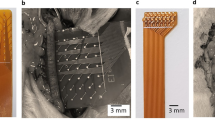Abstract
IN spite of increasing interest in functional disorders of the human uterus and clinical investigation, the obstetrician has little control apart from stimulation of uterine contractions. Premature labour leading to prematurity is at the present time the greatest single preventable cause of neonatal morbidity and mortality1–3. Much of the present-day investigation attempts empirically to use smooth muscle relaxants to prevent premature activity, without a basic understanding of the mechanism of normal uterine muscle control. It is not known, for example, how oxytocin exerts its stimulatory action on the gravid uterus.
This is a preview of subscription content, access via your institution
Access options
Subscribe to this journal
Receive 51 print issues and online access
199,00 € per year
only 3,90 € per issue
Buy this article
- Purchase on SpringerLink
- Instant access to full article PDF
Prices may be subject to local taxes which are calculated during checkout
Similar content being viewed by others
References
Nelson, W. E., Textbook of Pediatrics, 7th ed., 306 (1959).
Bruns, P. D., and Cooper, W. E., Clin. Obst. and Gynec., 4, 341 (1961).
Hardy, Janet, B., Clin. Obst. and Gynec., 5, 14 (1962).
Daniel, E. E., Canad. J. Biochem. Physiol., 38, 1327 (1960).
Author information
Authors and Affiliations
Rights and permissions
About this article
Cite this article
MACLACHLAN, T., DANIEL, E. & PAUL, W. Electrical Activity in Human Uterine Muscle Strips. Nature 208, 290–291 (1965). https://doi.org/10.1038/208290a0
Issue Date:
DOI: https://doi.org/10.1038/208290a0



